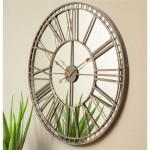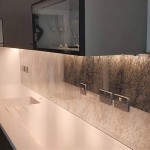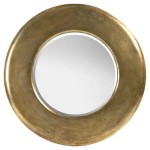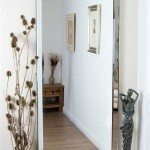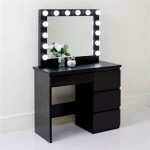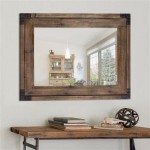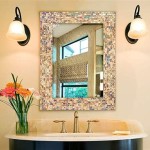Antique Hall Tree With Mirror: Understanding Value and Valuation
The antique hall tree with a mirror, a functional and aesthetically pleasing piece of furniture popular in the 19th and early 20th centuries, often graces the entryways of homes with its distinguished presence. These pieces, also known as coat racks, hall stands, or umbrella stands, served a practical purpose: organizing outerwear, hats, and canes, thereby keeping hallways tidy. The integration of a mirror further enhanced their utility, allowing for a quick check before leaving the house. As antiques, their value is determined by a variety of factors, requiring the expertise of qualified valuers familiar with furniture history and market trends.
Assessing the value of an antique hall tree with a mirror necessitates careful examination of its construction, materials, and historical context. The presence of original features, the quality of craftsmanship, and the overall condition significantly influence its market price. Due to the complexity of the valuation process, seeking professional advice is often recommended to obtain an accurate assessment. Valuers specialize in identifying key characteristics that contribute to the hall tree's worth, including maker marks, wood type, and the style of carving.
Determining Factors in Antique Hall Tree Valuation
Several key elements are considered by antique valuers when assessing the worth of a hall tree with a mirror. These encompass its intrinsic characteristics, provenance, and the current demand within the antique market.
1. Authenticity and Originality: One of the primary considerations is confirming the authenticity of the hall tree. Is it genuinely an antique or a reproduction? Original components, finishes, and hardware play a crucial role in establishing authenticity. Valuers examine joints, screws, and the overall construction for evidence of age and original craftsmanship. Hardware, such as hooks and mirror frames, are closely scrutinized to identify replacements or alterations. Original finishes, even with some wear, are generally preferred over refinished surfaces, as they retain the character and historical evidence of the piece. Reproductions, while possibly attractive, typically possess significantly lower values compared to authentic antiques.
The presence of a maker’s mark or label is a significant advantage. These marks can help to identify the manufacturer, origin, and production period. Researching the manufacturer can provide historical context and confirm the authenticity of the piece. Even without a clear mark, experienced valuers can often attribute a piece to a particular maker or region based on stylistic features and construction techniques. Any documentation, such as original sales receipts, family history, or photographs, that support the hall tree’s provenance contributes positively to its authenticated story and subsequently its value. This documentation helps to trace the ownership and history of the piece, creating a more complete picture for potential buyers.
2. Condition and Restoration: The condition of the hall tree is a critical factor influencing its value. Deterioration due to age, improper storage, or damage can significantly impact its worth. Cracks, warping, missing veneer, and insect damage are all common issues that affect antique furniture. Valuers examine the hall tree meticulously, noting any areas of concern. While some minor wear and tear can be expected in an antique, significant damage detracts from its value. However, a sympathetic and professional restoration can increase the value, but only if done correctly. Inappropriate or poorly executed repairs can actually diminish the piece’s value.
Restorations should be carried out by skilled craftspeople who understand antique furniture and use appropriate materials and techniques. Repairs should be minimally invasive, preserving as much of the original material as possible. The professional restorer ideally should keep a thorough record of the work they perform, which can be used to document the conservation efforts and to reassure potential buyers of the quality of the work.
3. Style, Materials and Craftsmanship: The style of the hall tree, including its design elements and decorative features, is a significant value determinant. Hall trees were produced in a variety of styles, reflecting the prevailing aesthetic trends of the period, from Victorian to Arts and Crafts. Intricate carvings, ornate details, and unusual designs can increase the value. The quality of the materials used in the construction of the hall tree also impacts the value. Hall trees were often made from hardwoods such as oak, walnut, mahogany, and rosewood. The rarity and quality of the wood influences its worth.
The craftsmanship evident in the hall tree heavily influences its value. Handmade elements, such as hand-carved details and intricate joinery, indicate a higher level of skill and artistry. The presence and quality of the mirror itself are also crucial. Original mirrors, especially those with beveled edges or intricate frames, contribute to the hall tree's overall appeal and value. Mirrors that have been replaced with modern glass generally reduce the value. Features which are sought after in hall trees include benches and umbrella stands as well as hooks for coats and hats. The more of these features that are present and in good condition, the more desirable the hall tree will be and subsequently the higher its value.
The Valuation Process: A Detailed Examination
The valuation process for an antique hall tree with a mirror involves a structured and systematic approach. Expert valuers combine their knowledge of furniture history, market trends, and material analysis to provide an accurate assessment. This process typically includes several key steps.
1. Initial Assessment and Documentation: The valuer begins by conducting a thorough visual inspection of the hall tree. This involves examining the piece for any signs of damage, wear, or repairs. The valuer notes the overall condition, including any cracks, chips, or missing pieces. Detailed photographs are taken to document the hall tree's condition and features. These photographs serve as a visual record and aid in the valuation process. The valuer records the dimensions of the hall tree, including its height, width, and depth. These measurements are essential for comparing the piece to similar examples and determining its size and proportions.
The valuer documents any identifying marks or labels, such as maker's marks, stamps, or inscriptions. These marks can provide valuable information about the hall tree's origin and manufacturer. The valuer also notes any distinguishing features, such as unique carvings, decorative elements, or unusual hardware. These features can add to the hall tree's appeal and value. A detailed written description of the hall tree is created, including its style, materials, construction techniques, and any notable features. This description serves as a comprehensive record of the hall tree's characteristics.
2. Historical Research and Comparison: The valuer conducts research to determine the hall tree's history and provenance. This may involve consulting historical records, auction catalogs, and furniture reference books. The valuer attempts to identify the manufacturer of the hall tree, if possible. This information can provide insight into the piece's quality, style, and value. The valuer also researches the period in which the hall tree was made. This helps to establish the historical context and determine its authenticity and age. Similar examples of hall trees are researched, including those that have been sold at auction or offered for sale by antique dealers. This comparison helps to establish the market value and determine the hall tree's relative worth.
The valuer considers any known ownership history or provenance of the hall tree. This information can add to its value, especially if it has a connection to a notable historical figure or event. The valuer also researches any relevant information about the style and design of the hall tree. This helps to understand its aesthetic and artistic significance. The valuer thoroughly researches any marks or labels found on the hall tree to better understand its history and origin.
3. Market Analysis and Valuation: The valuer analyzes the current market conditions to determine the hall tree's fair market value. This involves considering factors such as supply and demand, economic trends, and the popularity of antique furniture. The valuer considers recent sales of similar hall trees at auction and through private sales. This provides a benchmark for estimating the piece's value. The valuer takes into account the condition of the hall tree, its authenticity, and any unique features that may affect its value. These factors are weighed to arrive at a final valuation.
The Valuer should also consider the geographical location of the hall tree and any regional variations in demand that may exist. For example, a hall tree from a specific region or manufacturer may be more highly valued in that region. The valuer prepares a formal valuation report that includes a detailed description of the hall tree, its history, condition, and market value. This report is used for insurance purposes, estate planning, or for selling the piece. The valuer provides a reasoned justification for the valuation, explaining the factors that were considered and the methodology used to arrive at the final figure. The valuer makes this valuation by using their knowledge, research, and judgement of the antique market.
Common Pitfalls in Antique Hall Tree Valuation
While the valuation process aims for accuracy, several potential pitfalls can lead to inaccuracies. Awareness of these pitfalls is crucial for both valuers and owners to obtain a reliable and defensible assessment.
1. Overlooking Hidden Damage: Superficial inspections may fail to detect hidden damage, such as woodworm infestation, structural weaknesses, or poorly executed repairs beneath the surface. Valuers need to employ techniques such as moisture testing and internal inspection using endoscopic cameras to identify concealed deterioration. This requires experience and specialized tools. Failing to identify hidden damage can result in a significant overvaluation, followed by disappointment when the damage is discovered. Buyers are likely to offer much less, or potentially withdraw from the purchase, if they discover hidden damage. Even if the seller is selling privately, they must disclose any known damage to avoid accusations of misrepresentation, or even fraud.
2. Misinterpreting Restoration Work: Restoration work, whether skillfully executed or poorly done, can be misinterpreted if not carefully assessed. An overly aggressive restoration that removes original patina or alters the character of the piece can diminish value. Conversely, a poorly executed repair can also negatively impact the value. A valuer must be able to distinguish between sympathetic conservation and detrimental alteration. Documentation of any restoration work performed is crucial. Valuers should ask the owner to provide the details of any restoration work performed on the hall tree. This might include the bill from the restorer, a list of the work carried out, or photographs of the hall tree before and after the work was completed.
3. Ignoring Current Market Trends: Antique furniture market trends are constantly evolving. Demand for certain styles and periods can fluctuate significantly. Valuers must stay informed about current auction results, dealer inventories, and collectible preferences. Relying on outdated information or generic pricing guides can lead to inaccurate valuations. Subscribing to trade publications, attending antique shows, and networking with other valuers are essential for staying abreast of market developments. Valuers should also use online resources to track auction prices and monitor market trends. They should be aware of any recent changes in demand for antique hall trees, and they should factor these changes into their valuations.

Mahogany Pulaski Furniture Mirror Back Hall Tree

Vintage Pine Hall Tree With Mirror Amish Direct Furniture

Mahogany Pulaski Furniture Mirror Back Hall Tree

Antique American Renaissance Revival Hall Tree By Thomas Brooks For Antiques Com Classifieds

Mahogany Pulaski Furniture Mirror Back Hall Tree

Vintage Pine Hall Tree With Mirror Amish Direct Furniture
An Edwardian Oak Hall Stand With Bevelled Mirror Over Two Tiles Six Brass Hat Hooks Umbrella S

Mahogany Pulaski Furniture Mirror Back Hall Tree

Antique American Renaissance Revival Hall Tree By Thomas Brooks For Antiques Com Classifieds

A Walnut And Veneered Console With Mirror Framed By Carved Side Columns Spiral Motif Curvilinear Legs Manifattura Del Xx Secolo
